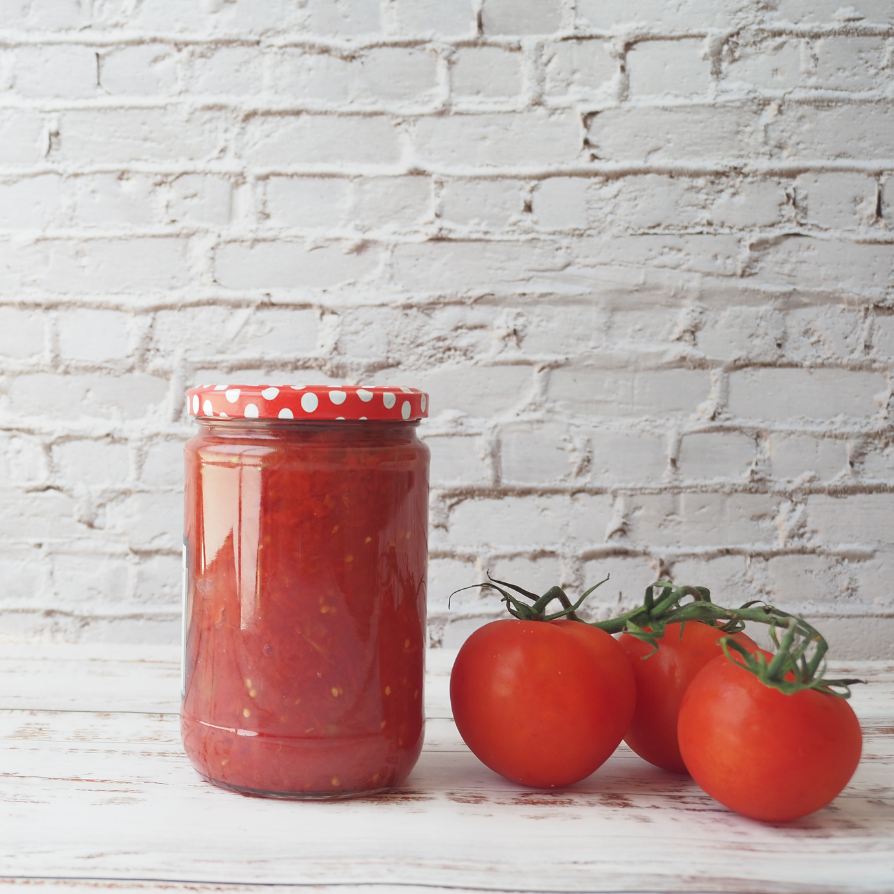Tomato paste often feels like a small ingredient but it has a big impact on flavor. A spoonful of this thick red paste can turn a simple dish into something rich and deep. It adds body to sauces, enhances soups, and brings balance to countless recipes. Because of its strong flavor, you usually do not use the whole can or tube at once. That leaves the question many cooks face at home. How long does tomato paste last in the fridge?
Storing food the right way is not only about avoiding waste. It also ensures safety and keeps every meal fresh and flavorful. Understanding storage rules for tomato paste helps you save money, reduce spoilage, and protect your health.
What is Tomato Paste and Why Proper Storage Matters?
Tomato paste comes from ripe tomatoes that go through a slow cooking process until most of the water evaporates. The result is a thick and concentrated product that carries an intense tomato flavor. It works as the base for sauces, marinades, and even some dressings. Because of its strength, recipes only need a small amount.
Before you open a can or tube, tomato paste shelf life can stretch for months or even years if it stays sealed and stored in a cool pantry. Once you open it, the clock starts ticking. Air exposure and bacteria begin to affect its quality, which makes storage much more important. Proper storage keeps the flavor strong and prevents harmful spoilage.
How Long Does Tomato Paste Last in the Fridge After Opening?
This is the key question every home cook wants answered. How long does tomato paste last in the fridge after you break the seal? The answer depends on the type of container.
If you use tomato paste from a can, the leftover paste usually stays fresh for five to seven days once you move it into a safe container. If you use tomato paste from a tube, it often lasts a little longer. A tube can stay fresh for seven to ten days because less air reaches the product inside.
Several factors affect freshness. Exposure to air is one. Each time you scoop paste from the container, oxygen and bacteria reach it. The type of storage method also matters. An airtight glass jar offers better protection than the original can. The colder part of your fridge will keep it stable longer than the door shelf where temperature shifts more often.
Signs That Tomato Paste Has Gone Bad
Colour changes, mould growth, sour smell
Sometimes you may forget how long the paste has been in the fridge. When that happens, your eyes and nose can help you make the right call. The most common signs show through changes in colour, smell, and texture.
Spoiled tomato paste may turn darker on the surface or show small spots of mold. A sour or off smell is another clue. Fresh paste has a clean tomato aroma while spoiled paste smells sharp or unpleasant. The texture may also change. Instead of smooth and thick, it may turn watery or lumpy.
These signs answer the question of how to tell if tomato paste is bad. Trust your senses. If the paste looks or smells wrong, it is better to throw it away than risk your health.
Best Ways to Store Tomato Paste in the Fridge
- The way you store tomato paste makes all the difference. Never leave leftovers in the opened can.
- Metal reacts with air and can give the paste a metallic taste. Transfer it to a clean airtight glass or plastic container as soon as you open the can.
- If you buy tomato paste in a tube, storage feels easier. The paste stays inside the narrow tube and only a small portion touches air each time you use it. That slows down spoilage compared to cans. Whether you use jars or tubes, storing tomato paste in the fridge at the right temperature helps keep it fresh until the next meal.
Can You Freeze Tomato Paste for Longer Storage?
If you often find yourself wasting half a can of paste, freezing may solve the problem. Yes, you can freeze tomato paste and it works better than many people expect. The best method is to scoop small spoonfuls into an ice cube tray. Once frozen, pop out the cubes and store them in a freezer bag. Each cube is easy to grab whenever you need a small amount for cooking.
Frozen tomato paste can last two to three months without losing much quality. This method saves time, prevents waste, and makes cooking easier since you always have ready-to-use portions on hand.
Tips to Extend Tomato Paste Shelf Life
Keep containers sealed tightly
A few simple habits can stretch the life of your tomato paste. Always seal the container tightly after each use. Exposure to air shortens freshness more than anything else.
Always use clean utensils
Use a clean spoon every time you scoop paste out. Dirty utensils can introduce bacteria that speed up spoilage.
Store at a consistent cold temperature
Keep the paste in the coldest section of your fridge rather than the door. The back shelf maintains a steady low temperature while the door shifts each time you open it. These habits may sound small, but they add days of freshness and ensure your paste tastes the same from start to finish.
Conclusion
Tomato paste is a kitchen staple that adds powerful flavor in small doses. The key question remains the same for every cook. How long does tomato paste last in the fridge? The answer is usually five to seven days for paste from a can and up to ten days for paste in a tube. With proper storage, you can protect flavor and keep meals safe.
Remember the warning signs of spoilage. Check color, smell, and texture before using older paste. Transfer leftovers to airtight containers, consider tubes for convenience, and explore freezing for long-term storage.
Good storage practices extend tomato paste shelf life, save money, and keep every dish rich with flavor. With these simple habits, your fridge stays organized and your cooking always tastes its best.





